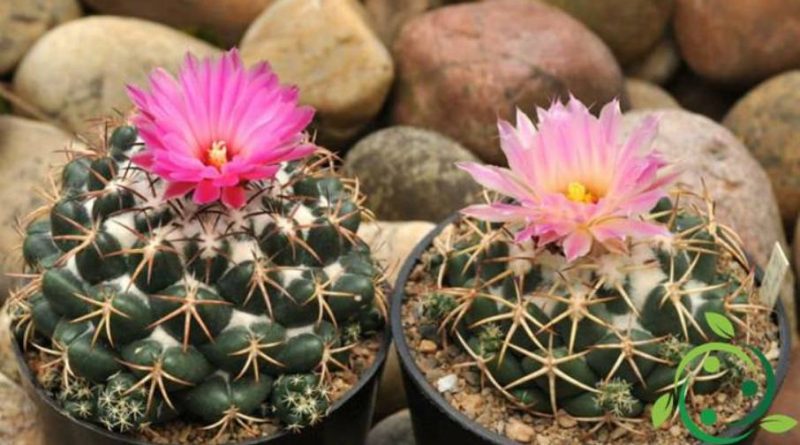How to grow Coryphantha
How to grow Coryphantha
The Coryphantha (Coryphantha (Engelm.) Lem., 1868) is a succulent species of the Cactaceae family, native to Mexico.
This plant has a globular shape with a characteristic position of the flowers that grow on the top of it.
The large flower is located exactly on the top of the stem, with very bright colors, yellow or orange. Usually each stem has a single flower, more rarely two or more can be found.
The stem has no ribs but consists of a series of alternating or spiral-shaped tubercles. The spines are very numerous and start from the center of each tubercle and with medium or small size: they rarely exceed 40 cm in height. The Coryphantha have a large taproot root and are very similar, aesthetically, to the plants of the genus Mammillaria.
In this card we will see how to cultivate Coryphantha, following the most appropriate precautions for this plant and considering that it is a slow growing cactacea that requires half the sun (or full sun, if the environment is well ventilated), frequent but light waterings and a temperature never below 5 ° C.
Among the manifold varieties and species that make up this genus we remember above all:
– Coryphantha cornifera: variety with light-colored spines that grow in a particular position, radiating with respect to its center and almost parallel with respect to the stem of the plant, so much that they seem to cage the plant at its center. To them we can add darker and thicker spines, which start only from the upper tubercles of the plant, one for each tubercle, well straight towards the outside of the plant;
– Coryphantha palmeri: small plant with flower with elongated white petals and central yellow stamens so that overall it vaguely resembles a daisy;
– Coryphantha runyonii: in this variety the tubercles are very pronounced and each can be inflated and lengthened to a very different extent, providing the plant with a bizarre and irregular appearance.
As for their cultivation, let’s immediately say that, unlike some succulent plants, it does not present particular difficulties.
It is important to choose, first of all, an exposure to half the sun, given that these plants fear the direct rays of the summer sun. Already adult plants (with at least two years of age) can also be placed in full sun, provided they are in a ventilated position.
The temperature, as mentioned, must be higher than 5 ° C but it is important that during the winter it is sufficiently cool, which will guarantee a good vernalization, which will ensure more luxuriant blooms in spring.
Pay attention to how the Coryphantha is watered; as with other succulent plants, avoid standing water; it is therefore advisable to water frequently (every 2-3 days) but with minimal water in order to allow the soil to dry completely between one and the other. In autumn the waterings can be reduced until they are completely suspended in correspondence with the vernalization.
As far as the substrate is concerned, it is advisable to create a mixture of fertilized earth, coarse sand and gravel, furthermore, both at the bottom of the pot and on its surface a layer of river gravel should be placed which will guarantee both the drainage and the protection of the substrate. excessive evaporation.
Let’s see the fertilizations. As usual, if the plant is cultivable in the open (for particularly mild climates, this can be done, at the beginning of the spring vegetative period, with well humified organic substance, mixed in the first layers of soil; if cultivated in pot the fertilizations can be made once every 15 days during spring and summer with a specific cactus product.
Finally the reproduction: let’s say immediately that the globular shape of these plants makes reproduction by cutting very difficult.
For this reason we opt for seed reproduction. The seeds must be buried in a mixture of very light soil to keep constantly moist in a shaded position and with a temperature above 20 ° C.
In some species, which produce at the base of the suckers, these can be taken for reproduction, greatly reducing the times compared to those necessary for the plants reproduced by seed.
For the repotting of these plants remember that the Coryphantha can be repotted only once every 3 years, paying particular attention not to damage the taproot. Repotting is often necessary because of their roots which become very long over time.

